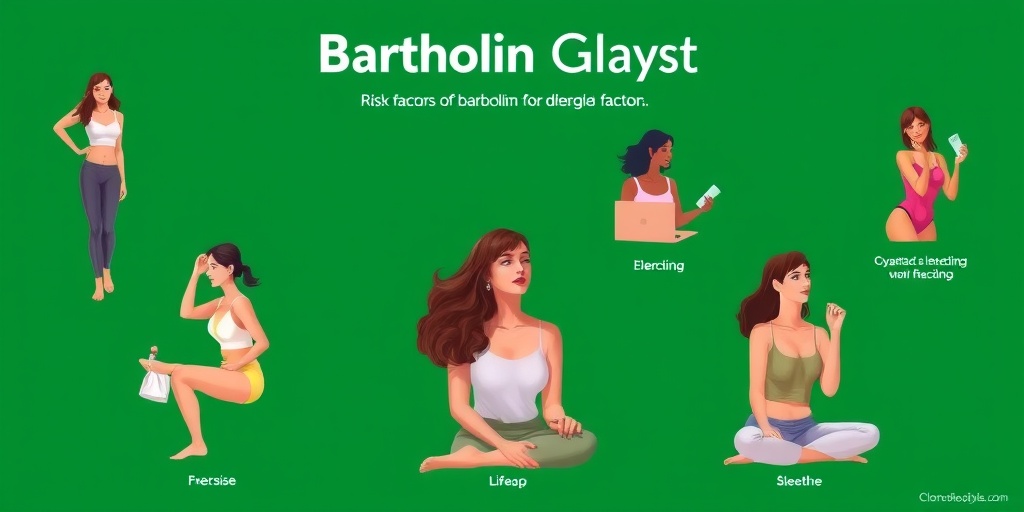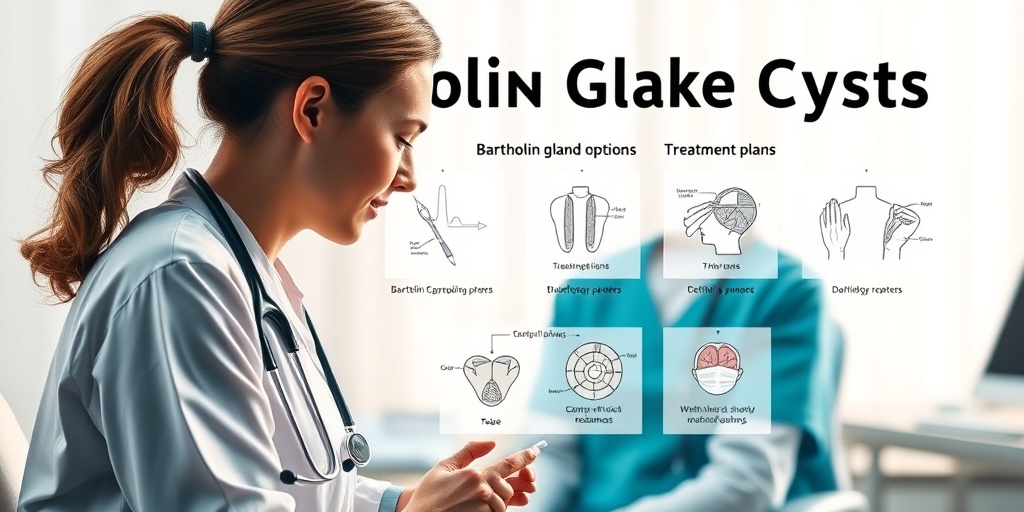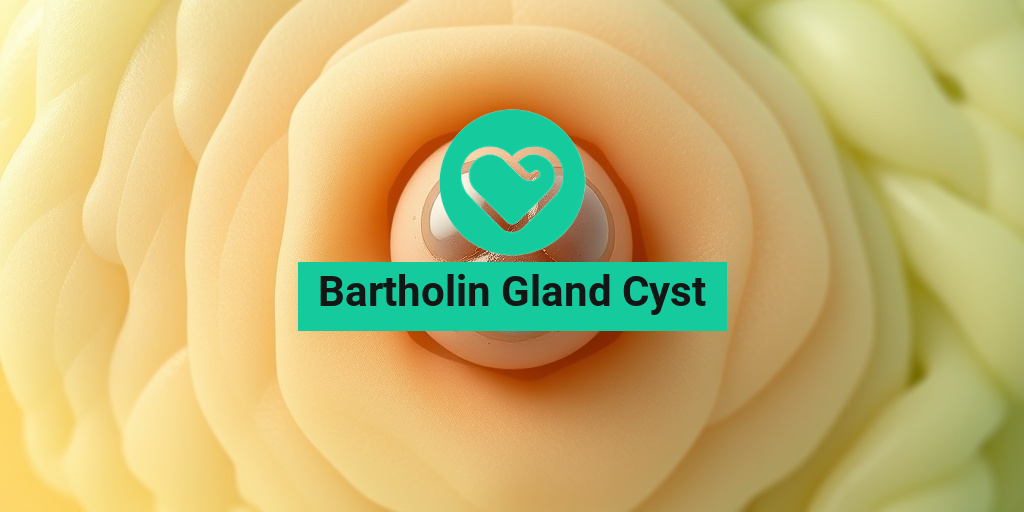What Is a Bartholin Gland Cyst?
A Bartholin gland cyst is a fluid-filled sac that forms in one of the Bartholin glands, which are located on either side of the vaginal opening. These glands play a crucial role in female reproductive health by secreting fluid that helps lubricate the vagina. When the duct of a Bartholin gland becomes blocked, fluid can accumulate, leading to the formation of a cyst. While these cysts are generally benign, they can cause discomfort and may require treatment if they become problematic.
Causes of Bartholin Gland Cysts
Understanding the causes of a Bartholin gland cyst can help in prevention and management. Some common causes include:
- Infection: Bacterial infections, including sexually transmitted infections (STIs), can lead to inflammation and blockage of the gland.
- Trauma: Injury to the vaginal area can cause swelling and blockage of the gland’s duct.
- Hormonal changes: Fluctuations in hormone levels, particularly during menstruation, can affect gland function.
Pathology of Bartholin Gland Cysts
From a pathological perspective, Bartholin gland cysts are classified as simple cysts. They are typically lined with a layer of epithelial cells and filled with a clear or yellowish fluid. In some cases, if the cyst becomes infected, it can develop into an abscess, which may require more intensive treatment.
Bartholin Gland Cyst Symptoms
Many women with a Bartholin gland cyst may not experience any symptoms, especially if the cyst is small. However, when symptoms do occur, they can vary in severity. Here are some common symptoms to watch for:
Common Symptoms
- Pain or Discomfort: A cyst can cause localized pain, especially during sexual intercourse or when sitting.
- Swelling: You may notice a lump near the vaginal opening, which can vary in size.
- Infection Signs: If the cyst becomes infected, symptoms may include redness, warmth, and pus drainage.
When to Seek Medical Attention
If you experience severe pain, fever, or notice any unusual discharge, it’s important to consult a healthcare provider. They can perform a thorough examination and determine if treatment is necessary. In some cases, a Bartholin gland cyst may require drainage or surgical removal, especially if it becomes recurrent or infected.
For those seeking more information on Bartholin gland cysts, including treatment options and management strategies, resources like Yesil Health AI (yesilhealth.com) can provide evidence-based answers tailored to your needs.
In conclusion, while a Bartholin gland cyst can be concerning, understanding its causes and symptoms can empower you to seek appropriate care. Remember, early intervention can lead to better outcomes and relief from discomfort. 🌸

Causes of Bartholin Gland Cysts
The Bartholin glands are two small glands located on either side of the vaginal opening. Their primary function is to produce fluid that helps lubricate the vagina. However, sometimes these glands can become blocked, leading to the formation of a Bartholin gland cyst. Understanding the causes of these cysts can help in managing and preventing them.
Blockage of the Ducts
The most common cause of a Bartholin gland cyst is the blockage of the duct that drains the gland. This blockage can occur due to various reasons, including:
- Infection: Bacterial infections, particularly sexually transmitted infections (STIs) like gonorrhea or chlamydia, can lead to inflammation and blockage.
- Trauma: Injury to the vaginal area, such as from childbirth or sexual activity, can cause swelling and obstruction of the gland’s duct.
- Hormonal Changes: Fluctuations in hormone levels, especially during menstruation or pregnancy, can affect the function of the Bartholin glands.
Other Contributing Factors
In addition to the primary causes, several other factors can contribute to the development of a Bartholin gland cyst:
- Chronic Inflammation: Conditions that cause chronic inflammation in the vaginal area can increase the risk of cyst formation.
- Skin Conditions: Certain skin conditions, such as eczema or psoriasis, may also affect the area around the Bartholin glands.
- Genetic Predisposition: Some individuals may have a genetic tendency to develop cysts or other glandular issues.
Recognizing these causes can be crucial for early intervention and treatment. If you notice any symptoms associated with a Bartholin gland cyst, such as swelling or discomfort, it’s essential to consult a healthcare professional for proper evaluation and management. 🩺
Risk Factors for Bartholin Gland Cysts
While anyone with Bartholin glands can develop a cyst, certain risk factors can increase the likelihood of their occurrence. Understanding these risk factors can help in taking preventive measures.
Age and Hormonal Factors
The risk of developing a Bartholin gland cyst can be influenced by age and hormonal changes:
- Reproductive Age: Women in their reproductive years (ages 20-40) are more likely to experience Bartholin gland cysts due to hormonal fluctuations.
- Menstrual Cycle: Hormonal changes during the menstrual cycle can lead to increased gland activity, making blockage more likely.
Sexual Activity and STIs
Engaging in sexual activity can also be a significant risk factor:
- Sexually Transmitted Infections: As mentioned earlier, STIs can cause inflammation and blockage of the Bartholin glands, leading to cyst formation.
- Multiple Sexual Partners: Having multiple sexual partners increases the risk of exposure to infections that can affect the glands.
Other Health Conditions
Several underlying health conditions can also contribute to the risk of developing Bartholin gland cysts:
- Chronic Inflammatory Conditions: Conditions like pelvic inflammatory disease (PID) can lead to chronic inflammation and increase the risk of cysts.
- Autoimmune Disorders: Autoimmune conditions may affect gland function and increase susceptibility to cyst formation.
Being aware of these risk factors can empower individuals to take proactive steps in maintaining their reproductive health. Regular check-ups and open communication with healthcare providers are essential for early detection and management of any issues related to Bartholin gland cysts. 🌸

Diagnosis of Bartholin Gland Cysts
Diagnosing a Bartholin gland cyst typically begins with a thorough medical history and physical examination. These cysts can develop when the ducts of the Bartholin glands, located on either side of the vaginal opening, become blocked. Understanding the symptoms and the diagnostic process is crucial for effective management.
Recognizing Symptoms
Many women may not even realize they have a Bartholin gland cyst, as they often do not cause any symptoms. However, when symptoms do occur, they can include:
- Pain or discomfort: This may be felt in the vaginal area, especially during intercourse or while sitting.
- Swelling: A noticeable lump may develop near the vaginal opening.
- Infection signs: If the cyst becomes infected, symptoms may include redness, warmth, and pus drainage.
Physical Examination
During a physical examination, a healthcare provider will typically:
- Inspect the vaginal area for any lumps or swelling.
- Palpate the area to assess the size and tenderness of the cyst.
- Check for signs of infection, such as discharge or fever.
Imaging Tests
In some cases, further imaging tests may be necessary to confirm the diagnosis or rule out other conditions. These may include:
- Ultrasound: This non-invasive test uses sound waves to create images of the cyst and surrounding tissues.
- MRI: In rare cases, an MRI may be ordered to provide a more detailed view of the cyst and its characteristics.
It’s essential to consult with a healthcare professional if you suspect you have a Bartholin gland cyst, especially if you experience pain or other concerning symptoms. Early diagnosis can lead to more effective treatment options. 🩺
Bartholin Gland Cyst Treatment Options
When it comes to treating a Bartholin gland cyst, the approach largely depends on the size of the cyst, the presence of symptoms, and whether it has become infected. Here are the most common treatment options available:
Observation
If the cyst is small and asymptomatic, your doctor may recommend a watchful waiting approach. Many cysts resolve on their own without any intervention. Regular check-ups can help monitor any changes. ⏳
Home Remedies
For mild discomfort, some home remedies may provide relief:
- Warm compresses: Applying a warm compress to the area can help reduce pain and promote drainage.
- Sitz baths: Soaking in warm water can soothe the area and may help the cyst to drain naturally.
Medical Treatments
If the cyst becomes infected or causes significant discomfort, medical intervention may be necessary. Treatment options include:
- Antibiotics: If an infection is present, your doctor may prescribe antibiotics to help clear it up.
- Cyst drainage: A healthcare provider may perform a simple procedure to drain the cyst, relieving pressure and pain.
- Word catheterization: In some cases, a small catheter may be inserted into the cyst to keep it open and allow continuous drainage.
Surgical Options
For recurrent cysts or those that do not respond to other treatments, surgical options may be considered:
- Excision: The cyst and surrounding tissue may be surgically removed to prevent recurrence.
- Marsupialization: This procedure involves creating a small opening in the cyst to allow it to drain continuously, reducing the likelihood of future cyst formation.
Choosing the right treatment for a Bartholin gland cyst should be a collaborative decision between you and your healthcare provider, taking into account your symptoms, lifestyle, and preferences. Remember, early intervention can lead to better outcomes! 🌟

Home Remedies for Bartholin Gland Cysts
Bartholin gland cysts can be uncomfortable and concerning, but there are several home remedies that may help alleviate symptoms and promote healing. While these remedies can be effective for mild cases, it’s essential to consult with a healthcare professional if symptoms persist or worsen.
Warm Compresses
Applying a warm compress to the affected area can help reduce discomfort and promote drainage of the cyst. Here’s how to do it:
- Soak a clean cloth in warm water.
- Wring out excess water and apply it to the cyst for 10-15 minutes.
- Repeat this process several times a day.
The warmth can help increase blood flow and encourage the cyst to drain naturally. 🌡️
Essential Oils
Some essential oils have anti-inflammatory and antibacterial properties that may help with Bartholin gland cysts. Consider using:
- Tea Tree Oil: Known for its antimicrobial properties, tea tree oil can be diluted with a carrier oil and applied to the cyst.
- Lavender Oil: This oil can help soothe inflammation and promote relaxation.
Always perform a patch test before using essential oils to ensure you don’t have an allergic reaction. 🌿
Hydration and Diet
Staying hydrated and maintaining a balanced diet can support your body’s healing processes. Focus on:
- Drinking plenty of water to stay hydrated.
- Incorporating fruits and vegetables rich in vitamins and antioxidants.
- Avoiding processed foods and sugars that can lead to inflammation.
A healthy diet can help your body fight off infections and reduce the likelihood of cyst formation. 🥗
Over-the-Counter Pain Relief
If you’re experiencing pain or discomfort from a Bartholin gland cyst, over-the-counter pain relievers such as ibuprofen or acetaminophen can provide temporary relief. Always follow the recommended dosage on the packaging and consult with a healthcare provider if you have any concerns. 💊
When to See a Doctor
While many Bartholin gland cysts can be managed at home, there are specific situations where it’s crucial to seek medical attention. Recognizing these signs can help prevent complications and ensure proper treatment.
Persistent Symptoms
If the cyst does not improve after a few days of home treatment, or if you notice any of the following symptoms, it’s time to consult a healthcare professional:
- Increased Pain: If the pain worsens or becomes unbearable.
- Swelling: Noticeable swelling around the cyst or in the surrounding area.
- Fever: A fever may indicate an infection, which requires prompt medical attention.
Signs of Infection
Infection can complicate a Bartholin gland cyst. Look out for:
- Redness and Warmth: If the area around the cyst becomes red and warm to the touch.
- Pus or Discharge: Any discharge from the cyst that is yellow or green may indicate an infection.
In such cases, a healthcare provider may prescribe antibiotics to treat the infection effectively. 🦠
Recurrent Cysts
If you experience frequent Bartholin gland cysts, it’s essential to discuss this with your doctor. They may recommend further evaluation or treatment options, such as:
- Drainage Procedures: In some cases, a doctor may need to drain the cyst to relieve pressure and discomfort.
- Surgical Options: For recurrent cysts, surgical removal of the gland may be considered.
Being proactive about your health is vital. If you have any concerns regarding Bartholin gland cysts, don’t hesitate to reach out to a healthcare professional for guidance and support. 🩺

Frequently Asked Questions about Bartholin Gland Cyst
What is a Bartholin Gland Cyst?
A Bartholin gland cyst is a fluid-filled sac that forms when the Bartholin glands, located on either side of the vaginal opening, become blocked. This blockage can lead to swelling and discomfort.
What are the common symptoms of a Bartholin Gland Cyst?
- Pain or discomfort: This may occur in the area of the cyst, especially during intercourse or while sitting.
- Swelling: A noticeable lump may develop near the vaginal opening.
- Infection signs: Symptoms such as redness, warmth, and pus may indicate an infected cyst.
What causes a Bartholin Gland Cyst?
The primary cause of a Bartholin gland cyst is the blockage of the gland’s duct, which can occur due to various factors, including:
- Infections: Sexually transmitted infections (STIs) can lead to inflammation and blockage.
- Trauma: Injury to the area can also cause blockages.
- Hormonal changes: Fluctuations in hormone levels may contribute to cyst formation.
How is a Bartholin Gland Cyst treated?
Treatment options for a Bartholin gland cyst may include:
- Warm compresses: Applying heat can help reduce swelling and discomfort.
- Drainage: If the cyst is large or painful, a healthcare provider may perform a drainage procedure.
- Antibiotics: If an infection is present, antibiotics may be prescribed.
- Surgical removal: In recurrent cases, surgical intervention may be necessary.
What is the ICD-10 code for a Bartholin Gland Cyst?
The ICD-10 code for a Bartholin gland cyst is N83.1. This code is used for medical billing and documentation purposes.
Can a Bartholin Gland Cyst become cancerous?
While Bartholin gland cysts are typically benign, it is essential to monitor any changes in size or symptoms. If there are concerns, a healthcare provider may recommend further evaluation to rule out malignancy.
Are there any home remedies for Bartholin Gland Cysts?
Some individuals may find relief from symptoms through home remedies such as:
- Warm sitz baths: Soaking in warm water can help alleviate discomfort.
- Over-the-counter pain relief: Medications like ibuprofen can help manage pain.
However, it is crucial to consult a healthcare provider for proper diagnosis and treatment.
When should I see a doctor for a Bartholin Gland Cyst?
You should seek medical attention if you experience:
- Severe pain: If the pain is intense and persistent.
- Signs of infection: Such as fever, chills, or pus discharge.
- Recurring cysts: If you have multiple occurrences, further evaluation may be necessary.
Can Bartholin Gland Cysts be prevented?
While it may not be possible to prevent Bartholin gland cysts entirely, maintaining good hygiene and practicing safe sex can help reduce the risk of infections that may lead to cyst formation.




